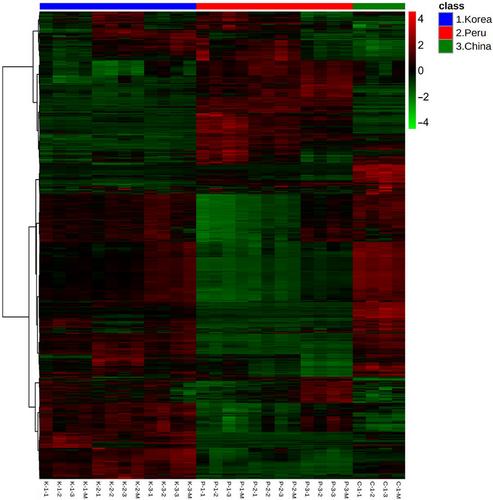Metabolic differences in Zingiber officinale Roscoe by geographical origin determined via multiplatform metabolomics and method for simultaneous analysis of six phenolic compounds
Abstract
Ginger, which is the rhizome of Zingiber officinale Roscoe, is widely distributed and consumed. The taste and aroma of ginger differ depending on its geographical origin. To distinguish the origin of ginger, ginger extracts from Korea, Peru, and China were analyzed using ultra-performance liquid chromatography (UPLC) coupled to quadrupole time-of-flight mass spectrometry and nuclear magnetic resonance spectroscopy for metabolomics. Korean ginger contained more 10-gingerol, and Peruvian ginger contained more 6-gingerol and 8-gingerol. Several amino acids negatively correlated with gingerols, suggesting that amino acids are related to the biosynthesis of gingerols. Sugars, which are the main energy source, positively correlated with gingerols. Organic acids and gingerols were also positively correlated, indicating that both organic acids and gingerols are used for adaptation to the environment surrounding the root. We confirmed the features of the primary and secondary metabolites by verifying the correlation between metabolites and differences in metabolites according to ginger origin. We additionally optimized a simultaneous UPLC analytical method of marker compounds for the simple and rapid quality control of ginger. This method exhibits excellent linearity, sensitivity, and reproducibility. Using metabolomics, differences in origin were observed, and a low-end equipment analysis method for quality control can be used in the ginger industry.


 求助内容:
求助内容: 应助结果提醒方式:
应助结果提醒方式:


